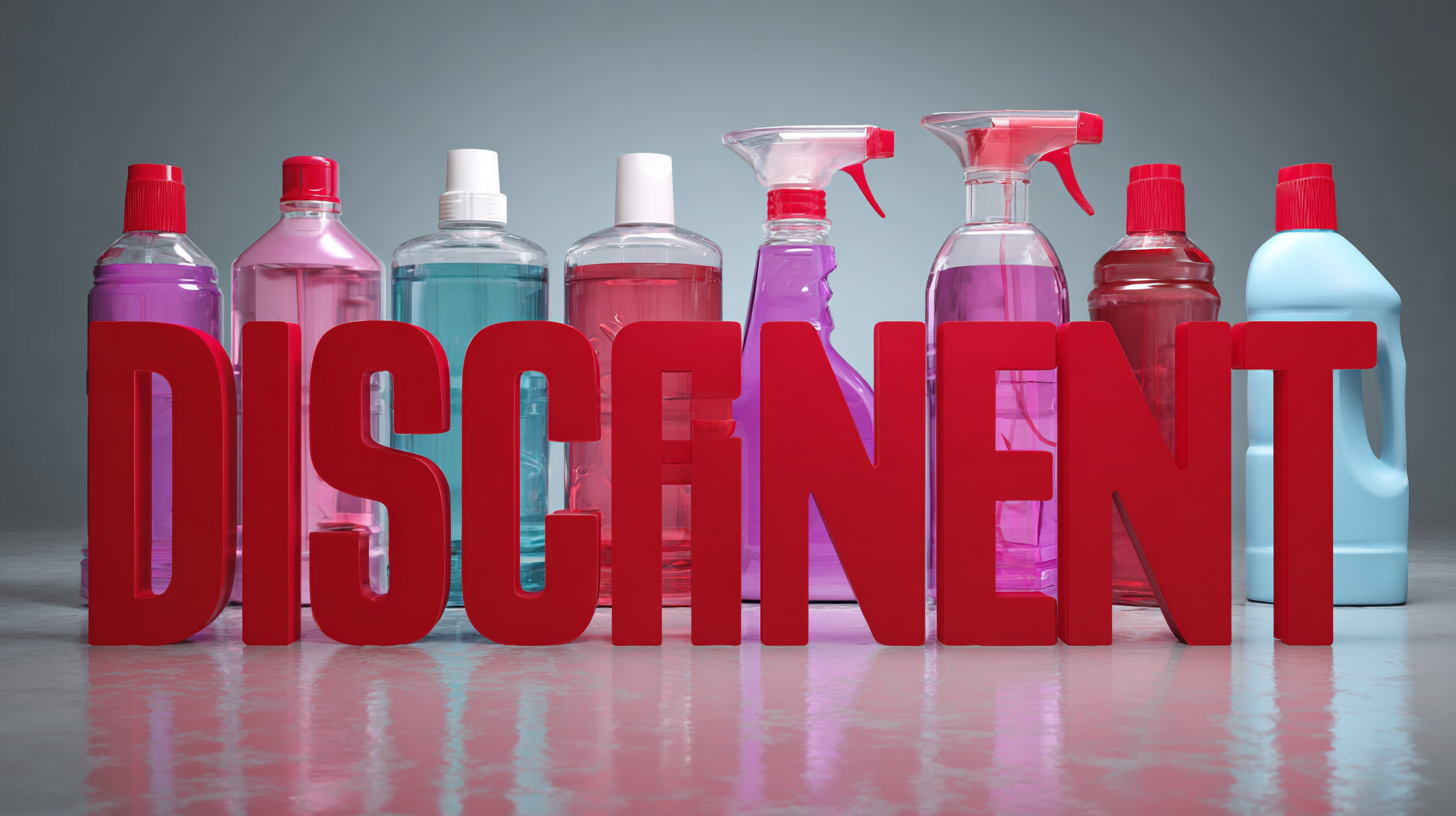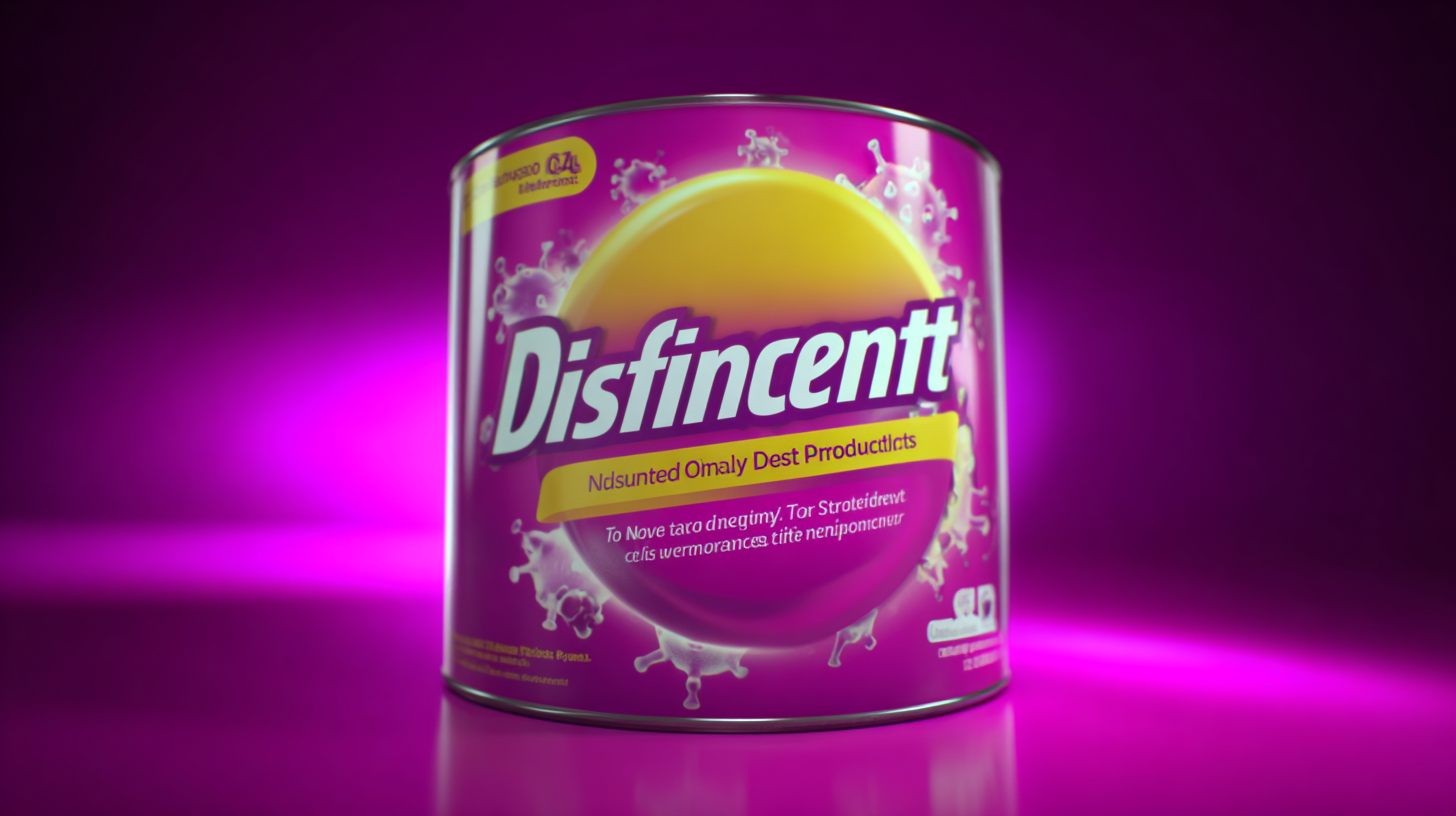In today's world, the importance of selecting the most effective disinfectant products has become paramount, especially in light of recent global health events. According to a recent report by the Environmental Protection Agency (EPA), the disinfectant market is projected to grow by 10.5% annually, driven by the increasing need for hygiene and infection control in various sectors.
 Furthermore, a study from Grand View Research indicates that the demand for disinfectant products is expected to reach $35 billion by 2026, highlighting their significance in public health. However, with a plethora of options available on the market, it is crucial for consumers and businesses alike to understand the efficacy and safety of these products. This blog will explore top strategies for selecting the most effective disinfectant products, ensuring that safety and efficiency are prioritized in both household and commercial settings.
Furthermore, a study from Grand View Research indicates that the demand for disinfectant products is expected to reach $35 billion by 2026, highlighting their significance in public health. However, with a plethora of options available on the market, it is crucial for consumers and businesses alike to understand the efficacy and safety of these products. This blog will explore top strategies for selecting the most effective disinfectant products, ensuring that safety and efficiency are prioritized in both household and commercial settings.
When it comes to choosing disinfectant products, understanding the various categories and their effectiveness is crucial. Disinfectants are primarily classified into three categories: low-level, intermediate-level, and high-level. According to the Centers for Disease Control and Prevention (CDC), low-level disinfectants are effective against most vegetative bacteria, some fungi, and certain viruses, making them suitable for cleaning surfaces that require minimal contamination control. However, they are not sufficient for environments with high-risk pathogens, such as healthcare settings.
Intermediate-level disinfectants, on the other hand, can kill more resilient organisms, including Mycobacterium tuberculosis and some viruses that cause epidemics. Data from the Environmental Protection Agency (EPA) illustrates that products with an EPA registration number, indicating their efficacy, should be prioritized. Lastly, high-level disinfectants are essential for critical medical instruments, as they can eliminate spores and all microorganisms. Understanding these categories helps ensure that the selected disinfectant effectively meets the specific needs of different environments, ultimately contributing to better infection control and public health safety.
When selecting the most effective disinfectant products, understanding key ingredients is essential. Look for disinfectants that contain active ingredients like quaternary ammonium compounds (quats), bleach, or hydrogen peroxide. These compounds have proven efficacy against a wide range of pathogens, including bacteria and viruses, making them vital components in any high-quality disinfectant. Quats, for instance, are particularly favored for their ability to provide a residual kill effect, ensuring surfaces remain disinfected for longer periods.
Another crucial ingredient to consider is alcohol, specifically formulations containing at least 60% isopropyl or ethyl alcohol. Alcohol-based disinfectants are not only effective germ killers but also evaporate quickly, leaving surfaces dry and sanitized without leaving behind residues. Additionally, look for products that are labeled as EPA-approved or meet industry standards, as these certifications indicate rigorous testing has been conducted to ensure safety and efficacy. By focusing on these key ingredients, you can confidently choose disinfectants that are both effective and reliable for maintaining a clean and safe environment.
| Key Ingredient | Effectiveness Against | Contact Time (minutes) | Surface Compatibility | Approved Use Areas |
|---|---|---|---|---|
| Quaternary Ammonium Compounds | Bacteria, Viruses, Fungi | 10 | Non-porous surfaces | Healthcare, Food Service |
| Hydrogen Peroxide | Bacteria, Viruses, Spores | 1 | Most surfaces | Hospitals, Laboratories |
| Sodium Hypochlorite | Bacteria, Viruses, Mold | 5 | Non-porous surfaces | Schools, Institutions |
| Alcohol (Ethanol or Isopropyl) | Bacteria, Viruses | 1-3 | Most surfaces | Homes, Offices |
| Benzalkonium Chloride | Bacteria, Viruses | 10 | Non-porous surfaces | Healthcare, Schools |
When it comes to selecting effective disinfectant products, ensuring compliance with safety standards is paramount. Regulatory bodies like the Environmental Protection Agency (EPA) and the Centers for Disease Control and Prevention (CDC) set forth guidelines that help consumers identify products that are not only effective but also safe for use in various environments. To evaluate a disinfectant's compliance, one should look for EPA registration numbers and confirm that it meets the necessary efficacy requirements against target pathogens. This information often appears on product labels or safety data sheets and provides consumers with confidence in their choices.
Moreover, understanding the significance of safety data sheets (SDS) is crucial for proper evaluation. These documents contain valuable information about the chemical composition, potential hazards, and safe handling procedures of disinfectant products. Familiarizing yourself with the contents of an SDS can help mitigate risks associated with improper use. Additionally, it can guide the selection of disinfectants that align with specific needs—such as food safety or sensitive environments—ultimately contributing to a healthier and safer space for everyone.

When selecting the most effective disinfectant products, assessing the manufacturer's reputation and their presence in the global market is crucial. A well-established manufacturer often indicates robust research and development capabilities, ensuring their products are effective and safe. Reputation can be gauged through customer reviews, industry certifications, and the longevity of the company in the market. Brands that have consistently provided reliable disinfectants over the years tend to foster trust among consumers and healthcare professionals alike.

Moreover, a manufacturer’s global presence can reflect its ability to adapt to various regulations and standards across different markets. Companies that operate internationally not only have to meet stringent safety and efficacy protocols but also understand diverse consumer needs and preferences. This adaptability often leads to innovations that can enhance the effectiveness of their disinfectants. When choosing disinfectants, prioritizing those from reputable manufacturers with a solid global footprint can lead to better outcomes in sanitation and infection control.
As the demand for effective disinfectants continues to rise, innovative technologies in disinfectant formulations are paving the way for improved microbial control, particularly in unique environments such as space. With the Animal Disinfectants Market projected to exceed USD 6.83 billion by 2032 with a CAGR surpassing 7.50% from 2025 to 2032, it's evident that advancements in formulation can significantly contribute to both animal health and safety. Understanding how microbial contamination behaves differently in microgravity conditions, for instance, is crucial for developing formulations that ensure pharmaceutical stability and effective sterilization.
To maximize the effectiveness of disinfectant products, consider these tips:
With the Global Ultrasound Probe Disinfection Market expected to grow at a CAGR of 10.1%, the proliferation of specialized disinfectants tailored to specific applications demonstrates the importance of innovation in this sector. Embracing these advancements not only helps in combating microbial threats but also aids in the pursuit of a cleaner, safer world.
